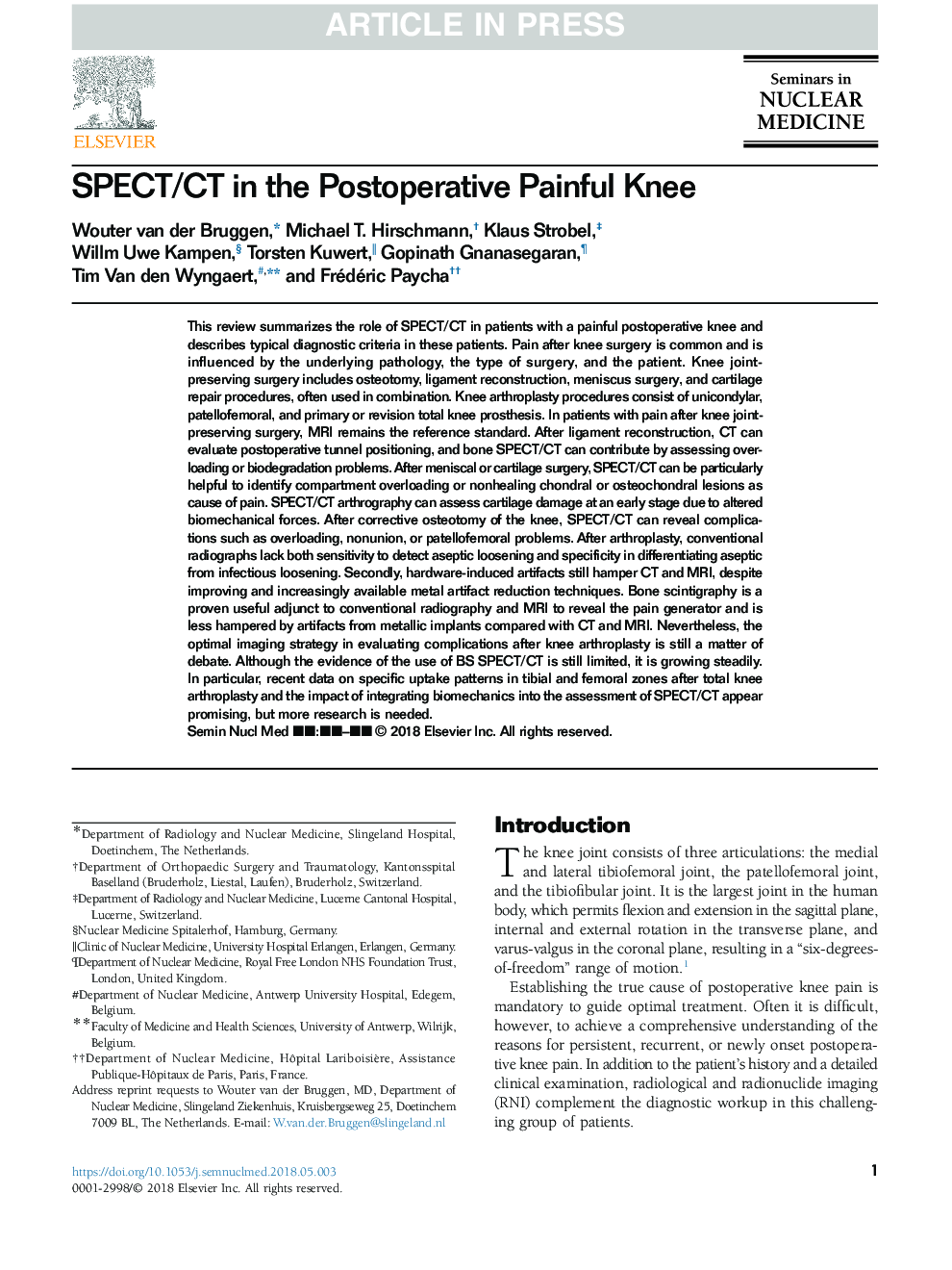| کد مقاله | کد نشریه | سال انتشار | مقاله انگلیسی | نسخه تمام متن |
|---|---|---|---|---|
| 8964897 | 1646684 | 2018 | 15 صفحه PDF | دانلود رایگان |
عنوان انگلیسی مقاله ISI
SPECT/CT in the Postoperative Painful Knee
دانلود مقاله + سفارش ترجمه
دانلود مقاله ISI انگلیسی
رایگان برای ایرانیان
موضوعات مرتبط
علوم پزشکی و سلامت
پزشکی و دندانپزشکی
رادیولوژی و تصویربرداری
پیش نمایش صفحه اول مقاله

چکیده انگلیسی
This review summarizes the role of SPECT/CT in patients with a painful postoperative knee and describes typical diagnostic criteria in these patients. Pain after knee surgery is common and is influenced by the underlying pathology, the type of surgery, and the patient. Knee joint-preserving surgery includes osteotomy, ligament reconstruction, meniscus surgery, and cartilage repair procedures, often used in combination. Knee arthroplasty procedures consist of unicondylar, patellofemoral, and primary or revision total knee prosthesis. In patients with pain after knee joint-preserving surgery, MRI remains the reference standard. After ligament reconstruction, CT can evaluate postoperative tunnel positioning, and bone SPECT/CT can contribute by assessing overloading or biodegradation problems. After meniscal or cartilage surgery, SPECT/CT can be particularly helpful to identify compartment overloading or nonhealing chondral or osteochondral lesions as cause of pain. SPECT/CT arthrography can assess cartilage damage at an early stage due to altered biomechanical forces. After corrective osteotomy of the knee, SPECT/CT can reveal complications such as overloading, nonunion, or patellofemoral problems. After arthroplasty, conventional radiographs lack both sensitivity to detect aseptic loosening and specificity in differentiating aseptic from infectious loosening. Secondly, hardware-induced artifacts still hamper CT and MRI, despite improving and increasingly available metal artifact reduction techniques. Bone scintigraphy is a proven useful adjunct to conventional radiography and MRI to reveal the pain generator and is less hampered by artifacts from metallic implants compared with CT and MRI. Nevertheless, the optimal imaging strategy in evaluating complications after knee arthroplasty is still a matter of debate. Although the evidence of the use of BS SPECT/CT is still limited, it is growing steadily. In particular, recent data on specific uptake patterns in tibial and femoral zones after total knee arthroplasty and the impact of integrating biomechanics into the assessment of SPECT/CT appear promising, but more research is needed.
ناشر
Database: Elsevier - ScienceDirect (ساینس دایرکت)
Journal: Seminars in Nuclear Medicine - Volume 48, Issue 5, September 2018, Pages 439-453
Journal: Seminars in Nuclear Medicine - Volume 48, Issue 5, September 2018, Pages 439-453
نویسندگان
Wouter van der Bruggen, Michael T. Hirschmann, Klaus Strobel, Willm Uwe Kampen, Torsten Kuwert, Gopinath Gnanasegaran, Tim Van den Wyngaert, Frédéric Paycha,